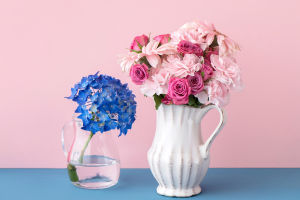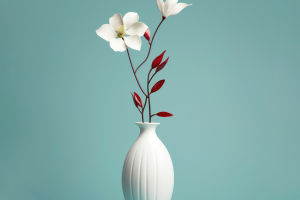The rose bouquet, as a gift symbolizing emotions and beauty, has transcended its role as mere decoration.
In different cultural contexts, it represents not only love but also respect, gratitude, and blessings.
Whether at romantic weddings, anniversaries, or occasions like birthdays and farewells, rose bouquets always convey deep emotions and care.
The symbolic meaning of roses dates back to ancient Greece and Rome, where they were associated with love and beauty. According to mythology, the rose symbolized Venus and Aphrodite, representing passion, romance, and allure. Red roses are often seen as a symbol of intense love, while white roses symbolize purity and innocence, making them suitable for expressing respect and commemoration.
In modern society, rose bouquets have expanded beyond romance. They are often used to convey gratitude, blessings, or heartfelt remembrance. For special occasions like Mother's Day, pink or white roses express tender love and appreciation.
Rose bouquets are also used in social and ceremonial events. In formal honors, festive activities, and farewell ceremonies, they serve as gifts conveying respect and congratulations. Especially on important occasions, the presence of a rose bouquet adds to the solemnity of the event and conveys sincere wishes and care.
What makes rose bouquets unique is their ability to be combined with other flowers and decorative elements, creating a more personalized and artistic style. Florists today use a variety of flower combinations, seasonal flowers, color contrasts, and theme designs to make rose bouquets more distinctive. For example, combining seasonal flowers with greenery and non-traditional blooms can add emotional depth to the bouquet.
In terms of interior decoration, rose bouquets add warmth and romance to spaces, whether in homes, offices, or hotels. Especially during festive times, they often serve as decorative highlights, creating a relaxed and joyful atmosphere. In creative spaces, rose bouquets reflect personality and taste, becoming important artistic decorations.
Rose bouquets also appear frequently in literature and films, symbolizing love, dreams, loss, or memories. They are often tied to the emotional journeys of protagonists, representing the themes, emotional turning points, or growth of characters. Many film scenes use rose bouquets to depict the complex emotions between characters, adding artistic depth.
With modern floral art, rose bouquets have become more diverse. In addition to traditional bouquets and flower crowns, designers are combining roses with items like jewelry, accessories, or crafts, creating unique gifts with cultural significance and artistic appeal. This innovation makes rose bouquets more meaningful and collectible as works of art.
In conclusion, the rose bouquet is not just a tool for expressing emotions but a fusion of culture, art, and aesthetics. It continues to play a unique role in different cultural contexts, whether in love expressions or as artistic decorations.


